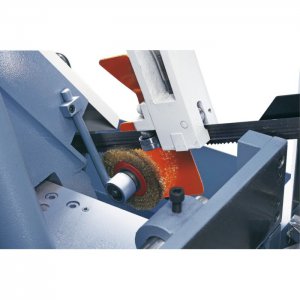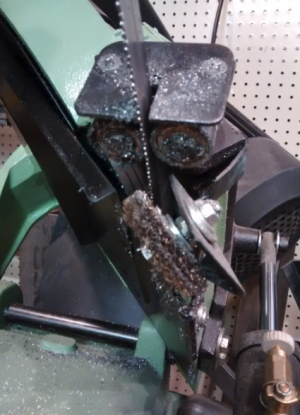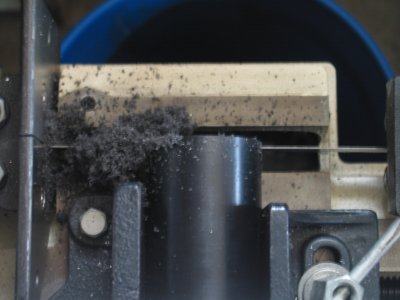- Joined
- Dec 26, 2016
- Messages
- 2,027
I have seen many mods that use the brass wire wheel rotating from under the blade, it is easy enough to do it that way but something in my head keeps telling me to install the wheel rolling on the blade from the side.
Wouldn't it be more efficient in removing chips if installed from the side? . what is your opinion? do you prefer one mod over the other?
I have already made the wheel holder (bearing, 1/4" arbor in a block of aluminum) but there's not much room around the sides of the blade (unless I use a 1" wheel instead of 2"), plenty of room if installed from under but if I go from side, I will be limiting the adjustment of the roller guides.
These two pics are not mine but show the two types of installation.


Wouldn't it be more efficient in removing chips if installed from the side? . what is your opinion? do you prefer one mod over the other?
I have already made the wheel holder (bearing, 1/4" arbor in a block of aluminum) but there's not much room around the sides of the blade (unless I use a 1" wheel instead of 2"), plenty of room if installed from under but if I go from side, I will be limiting the adjustment of the roller guides.
These two pics are not mine but show the two types of installation.




